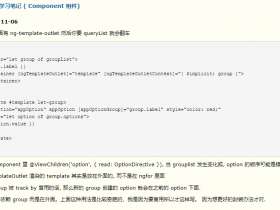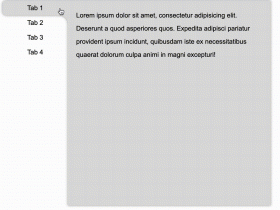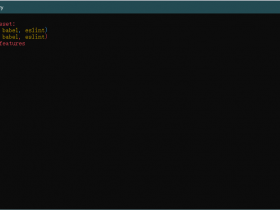- A+
所属分类:Web前端
@
Vue
1. vue-vli脚手架
1.1 介绍与安装
CLI是什么意思?
- CLI是 COmmand-Line Interface,翻译为命令行界面,俗称脚手架
- Vue CLI是一个官方发布vue.js项目脚手架
- 使用vue-cli可以快速搭建Vue开发环境以及对应的webpack配置
安装脚手架
npm install -g @vue/cli 拉取脚手架2
npm install @vue/cli-init -g 1.2 项目初始化
Vue CLI2初始化项目
vue init webpack my-project Vue CLI3初始化项目
vue create my-project 



2. 回顾箭头函数
2.1 基本使用
<script> //箭头函数:也是一种定义函数的方式 //1. 定义函数的方式:function const aaa = function(){ } //2.对象字面量中定义函数 const obj = { bbb: function(){ }, ccc(){ } } //3. ES6中的箭头函数 // const ccc = (参数列表) =>{ // } const ddd = () => { } </script> 2.2 参数和返回值
<script> //1. 参数问题 //1.1 两个参数 const sum = (num1, num2) => { return num1 + num2; } //1.2 一个参数 const power = num => { return num * num; } // 2.函数中的代码数量问题 // 2.1 函数代码块中有多行代码时 const test = () => { //1. 打印HelloWorld console.log('Hello World'); //2. 打印HelloVuejs console.log('Hello Vuejs'); } // 2.2 函数代码块中只有一行代码 // const mul = (num1, num2) => { // return num1 * num2; // } const mul = (num1, num2) => num1 +num2; console.log(mul(20, 30)); // const demo = () => { // console.log('hello Demo'); // } const demo = () => console.log('hello Demo'); console.log(demo()); </script> 2.3 this指向
<script> // 什么时候使用箭头 // setTimeout(function (){ // console.log(this); // },1000) // //this = window // // setTimeout(() => { // console.log(this); // }, 1000) //结论:箭头函数中的this引用就是最近作用域中的this //想外层作用域中,一层层查找this,直到有this的定义 const obj = { aaa() { setTimeout(function (){ setTimeout(function (){ console.log(this); //windows }) setTimeout(() => { console.log(this);//windows }, 1000) },1000) setTimeout(() => { setTimeout(function (){ console.log(this); //windows }) setTimeout(() => { console.log(this);//obj对象 }, 1000) }, 1000) } } obj.aaa() </script> 
3. 路由
- 路由(
routing)就是通过互联的网络把信息从源地址传输到目的地址的活动
阶段
前后端不分离阶段 - > 前后端分离阶段 -> 单页面富应用阶段SPA
整个网页就只有一个html页面
两种修改路由的方式
location.hash= 'home' 不会刷新网页
history.pushState({},'','home') 不会刷新网页 类似栈结构history.back() 可以回退上一个页面
类似历史记录的功能
history.replaceState()就没法后退了上一个页面
history.go(-1) 前进(正数) 后退(负数)
history.back(1) 后退
history.forword(1) 前进
3.1 vue-router安装与配置
- 安装vue-router
npm install vue-router --save - 在模块化工程中使用它(因为他是一个插件,所有可以通过Vue.use()来安装路由功能)
导入路由对象,并且调用Vue.use(VueRouter)
创建路由示例,并且传入路由映射配置
在Vue实例中挂载创建的路由实例
new Vue({ el: '#app', router, render: h => h(App) }) import Vue from 'vue' import VueRouter from 'vue-router' import HelloWorld from '@/components/HelloWorld' // 1.通过Vue.use(插件),安装插件 Vue.use(VueRouter) //2. 创建路由VueRouter对象 const routes = [ { path: '/', name: 'HelloWorld', component: HelloWorld } ] const router = new VueRouter({ //配置路由和组件之间的应用关系 routes }) //3.将router对象传入到Vue实例 export default router; 3.2 vue-router基本使用
基本使用
使用vue-router的步骤:
- 创建路由组件
- 配置路由映射:组件和路径映射关系
- 使用路由:通过
<router-link>跳转功能和<router-view>占位内容显示位置import Vue from 'vue' import VueRouter from 'vue-router' import Home from "../components/Home"; import About from "../components/About"; // 1.通过Vue.use(插件),安装插件 Vue.use(VueRouter) //2. 创建路由VueRouter对象 const routes = [ { path: '/home', name: 'Home', component: Home }, { path: '/about', name: 'About', component: About }, ] const router = new VueRouter({ //配置路由和组件之间的应用关系 routes }) //3.将router对象传入到Vue实例 export default router;
router-link
属性:
to: 属于指定跳转的路径tag: tag可以指定<router-link>之后渲染成什么组件replace: replace不会留下history记录, 指定后不会返回到上一个页面中active-class:当<router-link>对应的路由匹配成功时,会自动给当前元素设置一个router-link-active的class,设置active-class可以修改默认的名称。- 在进行高亮显示的导航栏菜单或者底部
tabbar时,会使用到该类 - 但是通常不会修改该类的属性,会直接使用默认的
router-link-active即可
- 在进行高亮显示的导航栏菜单或者底部
<div id="app"> <router-link to="/home" tag="button">首页</router-link> <router-link to="/about">关于</router-link> <router-view></router-view> </div> router-view
占位内容显示位置
重定向
const routes = [ { path: '/', redirect:'/home' }, { path: '/home', component: Home } ] 修改路由模式hash->history
linkActiveClass全局修改活跃的属性
const router = new VueRouter({ routes, mode:'history' linkActiveClass:'active }) 不用router-link
但是目前相同页面会报错
this.$router.push('/home');采用的是pushState()this.$router.replace('/home');采用的是replaceState()
<template> <div id="app"> <button @click="homeClick">首页</button> <button @click="aboutClick">关于</button> <router-view></router-view> </div> </template> <script> export default { name: 'App', methods:{ homeClick(){ // this.$router.push('/home'); this.$router.replace('/home'); console.log('homeClick'); }, aboutClick(){ // this.$router.push('/about'); this.$router.replace('/about'); console.log('aboutClick'); } } } </script> 3.3 vue-router动态路由
:userId
配置路由
{ path: '/user/:userId', name: 'User', component: User }, App.vue
<template> <div id="app"> <h2>我是App组件</h2> <router-link to="/home" tag="button" >首页</router-link> <router-link to="/about" tag="button" >关于</router-link> <router-link :to="/user/+userId" tag="button" >用户</router-link> <br> <img :src="imgURL" alt=""> <router-view></router-view> </div> </template> <script> export default { name: 'App', data(){ return{ userId:'lisi', imgURL:'https://www.baidu.com/img/PCtm_d9c8750bed0b3c7d089fa7d55720d6cf.png' } } } </script> User.vue
$route:当前活跃路由$router:路由对象
<template> <div> <h2>我是用户界面</h2> <p>我是用户的相关信息,嘿嘿嘿</p> <h2>{{userId}}</h2> <h2>{{$route.params.userId}}</h2> </div> </template> <script> export default { name: "User", computed:{ userId(){ return this.$route.params.userId; } } } </script> <style scoped> </style> 3.4 懒加载
当打包构建应用时,JavaScript包会非常大,影响页面加载
把不同的路由对应的组件分割成不同的代码块,然后当路由被访问时才加载对应的组件
一个路由对应一个js文件
懒加载方式,动态导入
const Home = () => import('../components/Home.vue') 
3.5 vue-router路由嵌套

const HomeNews = () => import("../components/HomeNews"); const HomeMessage = () => import("../components/HomeMessage"); { path: '/home', name: 'Home', component: Home, children:[ { path: 'news', component: HomeNews }, { path: 'message', component: HomeMessage } ] }, <template> <div> <h2>我是首页</h2> <p>我是首页内容,哈哈哈</p> <router-link to="/home/news" tag="button" >新闻</router-link> <router-link to="/home/message" tag="button" >消息</router-link> <router-view></router-view> </div> </template> <script> export default { name: "Home" } </script> <style scoped> </style> 3.6 vue-router参数传递
两种类型:params和query
params的类型:
- 配置路由格式:
/router/:id - 传递的方式: 在path后面跟上对应的值
- 传递后形成的路径:
/router/123,/router/abc
query的类型:
- 配置路由格式:
/router,也就是普通配置 - 传递的方式:对象中使用query的key作为传递方式
- 传递后形成的路径:
/router?id=123, /router?id=abc
<template> <div> <h2>我是Profile组件</h2> <p>{{$route.query}}</p> </div> </template> <script> export default { name: "Profile" } </script> { path: '/profile', name: 'Profile', component: Profile }, <!-- <router-link to="/profile" tag="button">档案</router-link>--> <router-link :to="{path :'/profile',query:{name:'slience',ahe:18,height:1.88}}" tag="button">档案</router-link> 
3.7 vue-router导航守卫
全局守卫
功能: <title>05-learnvuerouter</title>动态修改
mata:元数据,描述数据的数据
{ path: '/profile', name: 'Profile', component: Profile, meta:{ title:'个人中心' }, }, 获取路由修改内容动态,修改title
导航钩子
//前置钩子(hook)(守卫) router.beforeEach((to, from, next) => { //从from跳到to document.title = to.matched[0].meta.title next() }) //后置钩子不需要next() router.afterEach((to,from) => { }) 路由独享的守卫
官网
你可以在路由配置上直接定义 beforeEnter 守卫:
const router = new VueRouter({ routes: [ { path: '/foo', component: Foo, beforeEnter: (to, from, next) => { // ... } } ] }) 组件内的守卫
最后,你可以在路由组件内直接定义以下路由导航守卫:
const Foo = { template: `...`, beforeRouteEnter(to, from, next) { // 在渲染该组件的对应路由被 confirm 前调用 // 不!能!获取组件实例 `this` // 因为当守卫执行前,组件实例还没被创建 }, beforeRouteUpdate(to, from, next) { // 在当前路由改变,但是该组件被复用时调用 // 举例来说,对于一个带有动态参数的路径 /foo/:id,在 /foo/1 和 /foo/2 之间跳转的时候, // 由于会渲染同样的 Foo 组件,因此组件实例会被复用。而这个钩子就会在这个情况下被调用。 // 可以访问组件实例 `this` }, beforeRouteLeave(to, from, next) { // 导航离开该组件的对应路由时调用 // 可以访问组件实例 `this` } } 3.8 keep-alive
keep-alive是Vue内置的一个组件,可以使被包含的组件保留状态,或者避免重新渲染。router-view也是一个组件,如果直接被包在keep-alive里面,所有路径匹配到的视图组件都会被缓存
属性
include- 字符串或正则表达式,只有匹配的组件会被缓存exclude- 字符串或正则表达式,任何匹配的组件都不会被缓存
<keep-alive exclude="Profile,User"> <router-view></router-view> </keep-alive> Vue生命周期





